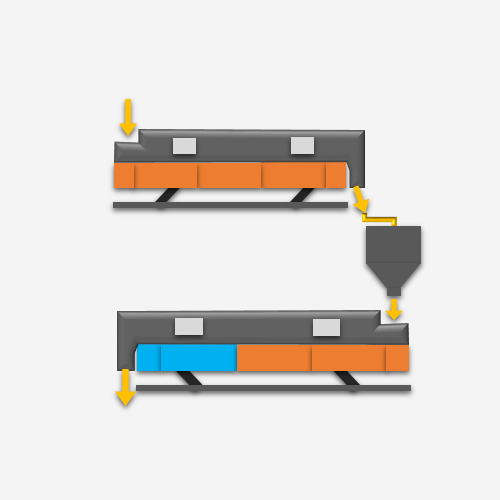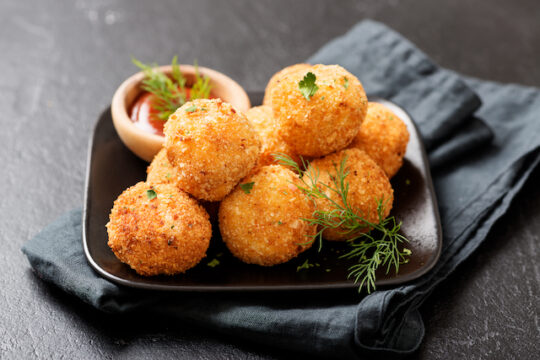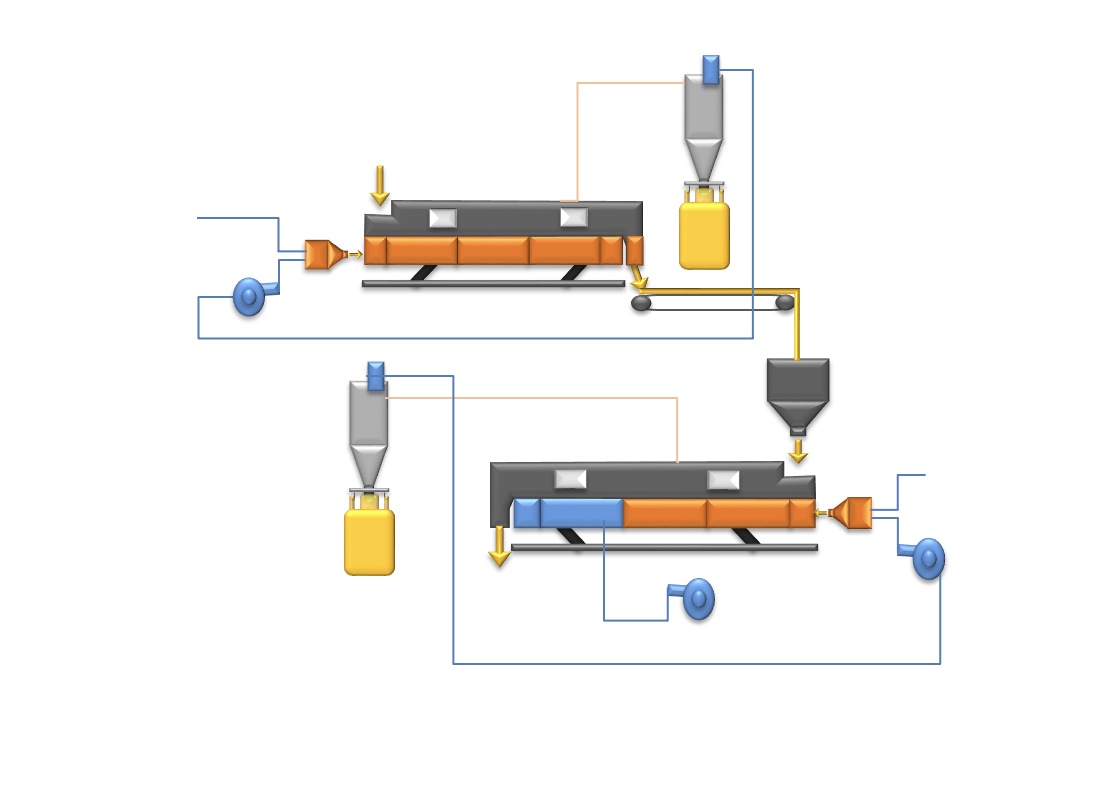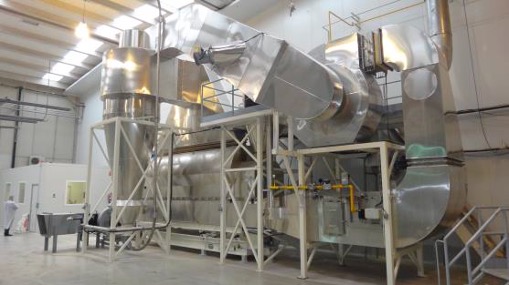

HOME > Industry > Bread crumbs > Bread Crumb and Rusk Production Line

TiERMAX offers a highly developed product line for the production of bread crumbs and rusk , which is used by the world's leading manufacturers.
The low g-force of the shaking fluid bed design allows for a complete fire safety system, including fire detection and water spray nozzles, to be installed within the dryer's process space.
The production line is available in different output capacities ranging from 900 lb/hr to 9000 lb/hr (finished product spec).
The line includes:
- Bread mill
- Fluid bed dryer/cooler
- Gas burner
- Cyclone
- Recirculation
- Exhaust blower
- Cooling fan with filter
- Fully automated controls and monitoring system

Bread crumbs are evaluated based on their appearance (form, structure, and colour), eating texture, and technical features (absorption, initial moisture content, etc).
Standard bread crumbs are made from bread that has been shaped into bricks or sheets using a sheeting line. The bread is then extruded onto the baking belt in lines or in one big, continuous layer that covers the whole belt.
These are then often broken up lightly as they leave the line and sent to the mill for fine milling.
American breadcrumbs, often known as natural breadcrumbs, are made from genuine slices of bread.
In the past, this consisted of supermarket-reclaimed loaves of bread.
Nowadays the dough is mixed, kneaded, and placed into individual baking tins. It is allowed to rise, then baked in the tins. Depending on the choice of the customer the loaves may be allowed to cool first, or passed straight to the mill.

Bread for breadcrumb is generally made with yeast. The process involves mixing time, proving time (rising), baking and optionally cooling times.
Cooling helps to fix the structure of the bread making it more resilient through the mill. You get much lighter, less dense crumb from cooled bread. When cooled the bread is typically <50°C on the inside and mills better. If not cooled, the mill requires a hot air by pass from the burner to reduce condensation and the effects of smearing inside the mill.
Milling screens determine the quantity of large/small particles into the dryer. Typical sizes include Ø 4,6,8,10,12 mm.
Product inlet moisture 35-40% dried to 8-14%, product temperature dryer: 70-80°C, process air temperature: 140-180°C

Rusk is a bread mix made without yeast. This is typically substituted with bicarbonate to enable some rising during baking and generate the typical airy texture of bread.
Rusk processing lines often have a smaller footprint and better throughputs than breadcrumb processing lines due to the absence of proving time.
A normal baking technique using an oven is quite similar to breadcrumbs, except that the bread dough does not require proving time.
The dough is extruded into small pellets, Ø ~2-3 cm, that are pneumatically transported into a fluid bed oven. Our fluid bed pellet oven is an intensive baking process requiring a significantly smaller footprint than a typical tunnel oven. The pellets are heated to ~200°C using process air of about 200-220°C. Due to the speed at which the dough is brought to temperature, and the small size of the pellets, there is a relatively large amount of crust or denser material in the product. Depending on the end user’s requirements, significant improvement to the structure can be achieved by adding a conditioning time and a cooling time for the pellets before they are transported to the mill.
Conditioning / Cooling
The Tiermax/Ventilex systems can incorporate a large diameter screw to hold the product at a relatively high temperature after the oven for 15-30 minutes to condition the pellets. This helps the interior to form a better structure by cooking for longer, while allowing the outside denser crust to absorb the moisture coming from the interior of the pellet, softening and improving the structure. Before milling, standard baking lines may use a cooling chamber, or a cooling belt.
Milling
Milling follows a similar principle to that during breadcrumb.
Drying
Product inlet moisture 35-40% dried to 1-3%, product temp dryer: 150-190°C, process air temperature: 170-210°C. Different products, suppliers, and customers require a different mix of drying and conditioning. Some use only high-temperature drying, heating the product up to 200°C in a thick bed to get a long residence time and the required moisture content. Others use a high-temperature drying followed by a conditioning period (maintaining a constant temperature in the product) to get even drier product. Others use a medium temperature drying (to about 140°C) and then conditioning at 130- 140°C to get a dry product.
let's find a solution to your production challenge together